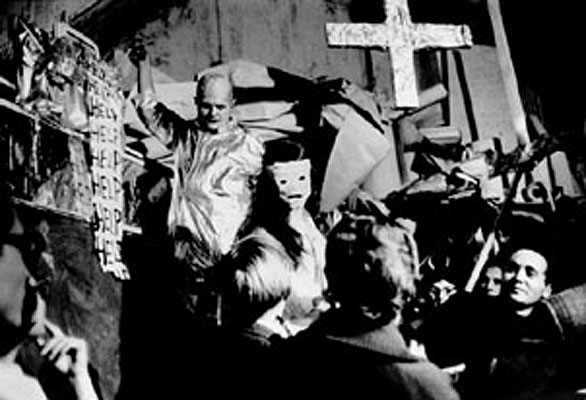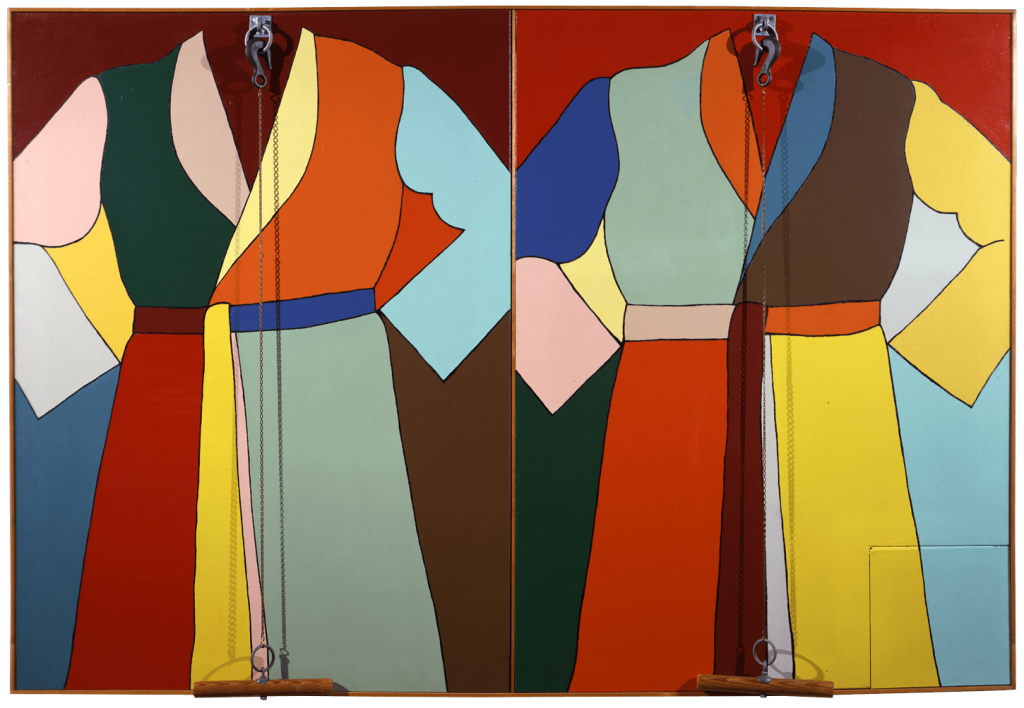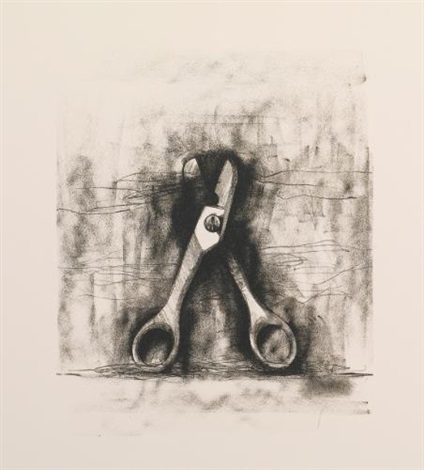Jim Dine is an american painter that emerged as one of the top artists during the pop art period. Most of his works revolve around the theme of his own memory, body and his own personal identity. Some of his works include 3D objects placed onto the canvas.
The Smiling Workman (1959)
Dine became one of the first in the art world known as “a progenitor of “Happenings,” interactive performance pieces that grew out of the experimental art scene in New York City during the late 1950s.” (Britannica). In this piece Dine is covered with various colours on his face and body as he follows it with two actions. First he paints on a wall “I love what I’m doing, HELP” and then drinks a can of paint which is really a can of tomato juice. At the end he jumps into the canvas destroying his work. The purpose of the performance piece is to make the audience more included.

Car Crash (1960)
The Car crash is another performance piece by Dine portraying, well a car crash. This piece in particular was about 15 minutes long. Most of everything in this piece was silver and he created anthropomorphic car figures. Dine had personal connection with this piece inspired by automobile accidents he was in himself. The atmosphere the piece is supposed to give off is fear and portray his trauma post accident.

Double Isometric Self-Portrait (1964)
This painting “Double Isometric Self-Portrait” is a portrait made up of objects from his everyday life. This is because he believed that these objects gave more meaning and power to the piece as they are easily recognizable. In this image in particular he used a bathrobe. A bathrobe was significant to create the meaning of privacy as its “very close to the skin”.

Ten Winter Tools (1972)
The “Ten Winter Tools” is a series of 10 lithographs of various hardware tools. Although they are portrayed in a normal fashion there is a deeper underlying meaning to these pieces. It was explained by Thistlethwaite that the reason why Jim uses tool is because, “tools appeal to Dine for many reasons, but three stand out: their connection to his adolescence, their association with work and the worker, and their formal beauty.” To him one of the other main connections of tools was the ideation of art and human creativity.


Source
https://www.theartstory.org/artist/dine-jim/artworks/
https://www.britannica.com/biography/Jim-Dine
Leave a Reply